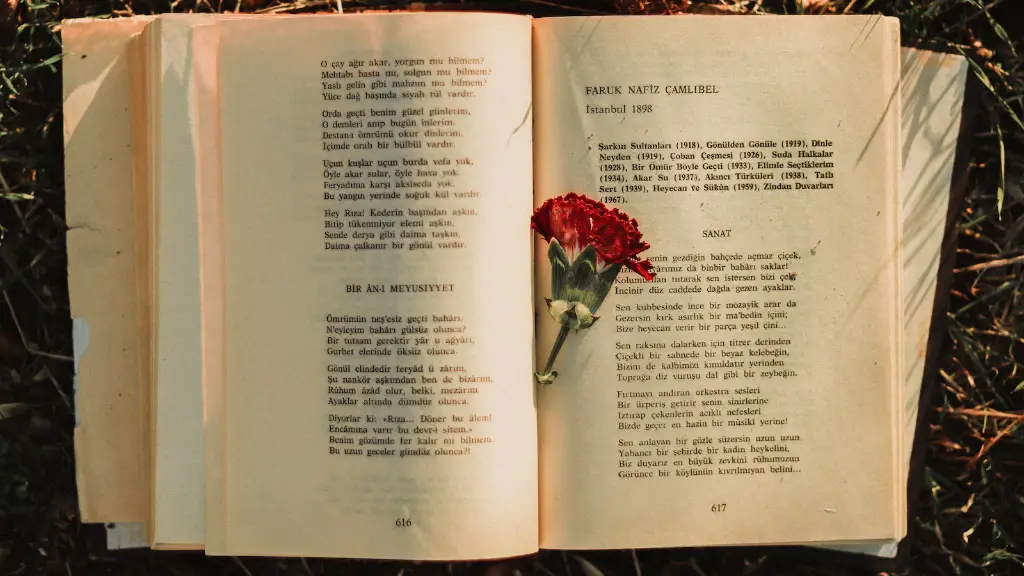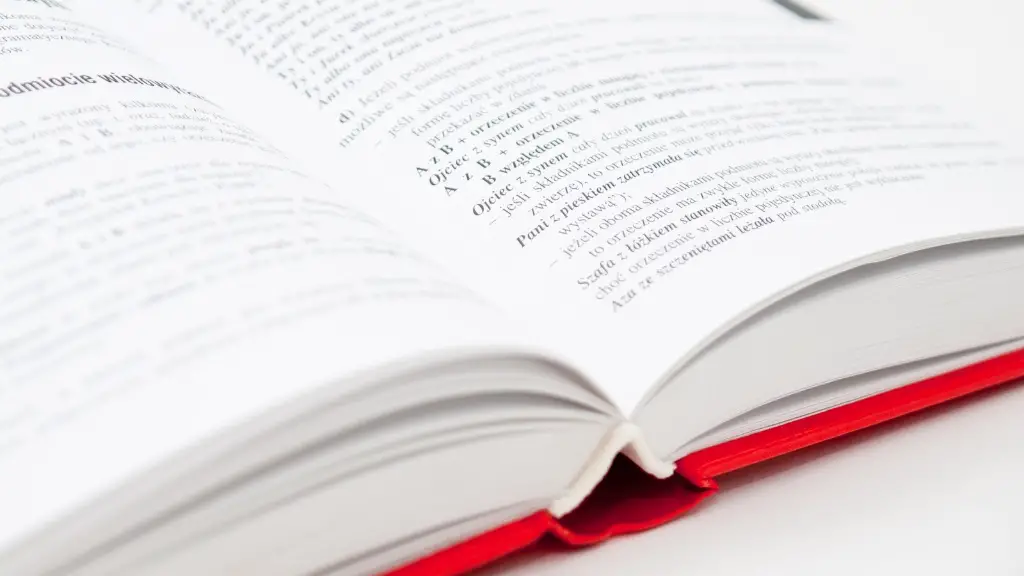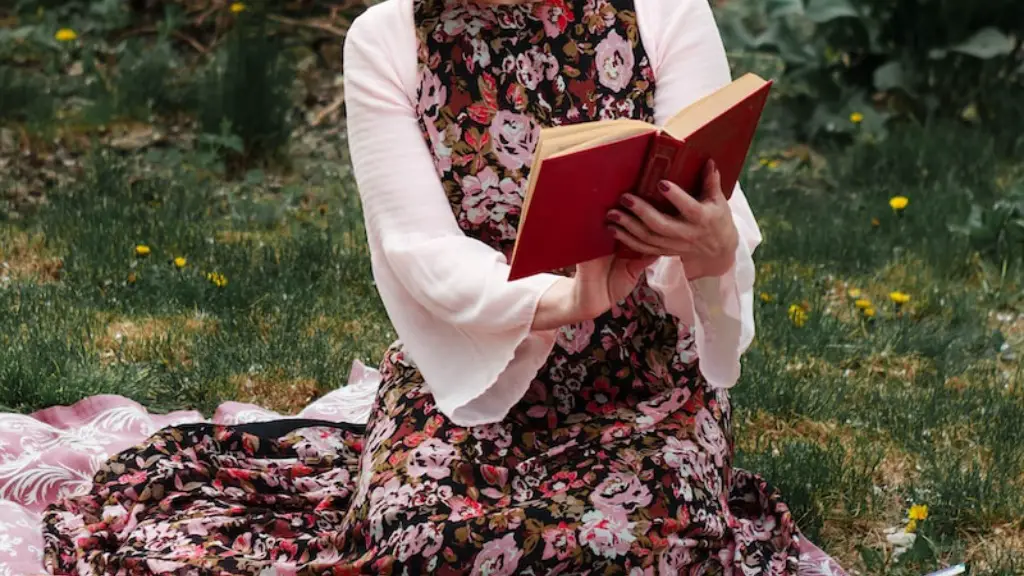Understanding Free Verse Poetry
Free verse poetry is an art form in which poets can make the structure of their poem up as they go along. It allows a greater freedom of expression than other poetic forms, letting a poem flow freely with the poet guiding its course. The form gives poets much more opportunity to express their emotions in the poem, rather than being constrained by rigid structures and rules. But while writing free verse poetry can be incredibly liberating, it can also be daunting to approach as a beginner with no clear sense of what to do.
Writing Basics
When beginning free verse poetry, it is important to have a basic understanding of what is required. Typically, the poem should contain some kind of emotion or sentiment, be it joy, sorrow, or anything in between. That emotion should be expressed within the words chosen and how they are connected together. Additionally, imagery, sound, and other literary techniques gathered both from knowledge and intuition can be used to greater effect. All of these techniques should focus on the emotion being expressed, with the poem being guided in its course by the poet’s hand and the feelings behind it.
Finding Inspiration
It is important to explore different sources of inspiration when trying to find the form and structure of a free verse poem. A great way of getting ideas is to read works of other poets, both classic and contemporary, to gain an insight into poetry in all its forms and to get ideas on the structure and layout of a free verse poem. Additionally, the world around us can be a great source of inspiration, whether it is the beauty of nature or the mundane of everyday life, and free verse poetry can be used as a great way to express what one feels when taking all of this in.
Rhythm and Flow
Another important aspect to consider when writing free verse poetry is the rhythm and flow of the poem. A poem with a consistent and discernable rhythm can add both an emotional and lyrical element to the poem, intensifying the feelings expressed within it. This rhythm can be implemented through the use of words and phrases alone, or by using an internal rhyme structure held together with internal assonance, alliteration and metaphor. Additionally, the flow of the poem should be kept natural, with a sense of progression and continuity throughout.
Finding and Experimenting with Structure
The structure of a poem is important in all forms of poetry, even free verse. Finding and experimenting with the structure can be a daunting task, but with experience it can become easier. Typically, the structure of the poem should be set before the actual writing process begins, in order to achieve a more consistent and meaningful product. This includes considering the length and topic of each stanza, the overall length of the poem, and any unique approaches to the structure, such as the use of tercets or quatrains.
Editing and Revising
Once the poem is written, it is important to revise and edit it, both in terms of grammar, structure, and flow. It is recommended to leave a few days between the initial writing and revisiting the poem to get a different perspective. Revising the poem can involve changing the structure and even rewriting entire stanzas. Additionally, it can involve using outside sources to gain a different perspective on the poem, as well as reading it aloud to find any inconsistencies or awkward turns of phrase.
Poetry as a Form of Communication
Free verse poetry can be a great form of communication, allowing individuals to express how they feel and make sense of their thoughts. Working with the structure of free verse poetry can help individuals gain confidence in their writing skills and express their emotions in a more articulate way. What’s more, writing poetry has been proven to have therapeutic qualities, helping to reduce stress, improving mood, and providing a sense of control which often alleviates mental health difficulties.
Exploring Feelings and Emotions
By exploring feelings and emotions of different kinds in free verse poetry, individuals can learn more about themselves and the world around them. Through writing different poems, individuals can gain insight into their own experiences, beliefs and values. Additionally, free verse poetry can provide a safe platform for individuals to express difficult emotions, such as bereavement, anger, or shame. In doing so, individuals can gain a greater sense of clarity and perspective on difficult emotions and can learn how to cope with them better.
How Poetry Can Unite
Poetry can often play a unifying role, bringing together people through shared experiences and the stories they tell. Through free verse poetry, individuals can learn more about the wider community, their own unique stories, and the greater issues facing society as a whole. Additionally, free verse poetry can become a form of activism, a powerful tool for conveying political messages, speaking out against injustice and challenging preconceived notions.
The Importance of Feedback
Writing poetry can be a difficult and isolating endeavour, and as such it is important to seek out and receive feedback from others. This feedback can come from the likes of teachers, other poets or even friends and family. Constructive feedback can help poets grow and develop, by getting a different perspective on the poem itself and by learning from the experience and knowledge of others.
Exploring Writing Prompts
Exploring different writing prompts can be a great way of beginning free verse poetry, as it can provide a starting place for the poem and its structure. Writing prompts can come from a variety of sources, such as pictures, stories, or even prompts written by other poets. Additionally, prompts can help to focus the poem, preventing it from meandering too far away from the original concept.
Importance of Music and Sounds
Exploring the use of sound and music in free verse poetry can be a great way to add an extra layer of emotion and interest to the poem. Indeed, the poem can become a type of musical score or song, with words being combined and linked together in a similar way one would to produce music, creating a harmonic and moving poem. This can be achieved through playing around with how words sound, as well as creating alliterative phrases and using rhythm and rhyme.
Experimentation
Experimentation is essential when writing free verse poetry, as it allows poets to try out different techniques in order to understand the form better. This could involve the use of different imagery and structure or the exploration of some of the more abstract aspects of free verse poetry. Indeed, different techniques can often lend themselves better to certain topics and emotions and can help to create a more personal and emotive poem.
Exploring Surrealism in Poetry
Exploring surrealism in free verse poetry can be extremely liberating, as it allows poets to express their emotions in a more surreal and abstract way. This can include the use of imagery and metaphor borrowed from the world of dreams, as well as the exploration of surrealist ideas such as the juxtaposition of two opposing ideas and the playing around with reality and the unreal. Additionally, it can become a place to explore different directions and take the poem in a wholly unique and unexpected direction.
Using Stream of Consciousness Writing
Stream of consciousness writing can be a great tool when writing free verse poetry, as it allows the poet to create a more intuitive and personal poem. This involves the poet writing down their thoughts and feelings as they come to them, without any censorship or judgement, creating a more honest and emotive poem as a result. This can create a more genuine and vulnerable poem which can, in turn, evoke powerful emotions in the reader.
Exploring Rhyme and Repetition
Exploring the use of rhyme and repetition in free verse poetry can be a great way to create a more memorable poem, as it allows the poem to become more lyrical and meaningful. This could involve the use of a limited word set and the repetition of certain phrases to create a consistent rhythm throughout, or the use of internal rhyme and alliteration to further enhance the lyrical effect. It should be noted, however, that less is often more with this type of poetry, as keeping it simple can often produce the most powerful results in the end.
The Power of Metaphor
Using metaphors in free verse poetry can be incredibly powerful, as it allows the poet to create powerful images within their poem. It can also be an effective way of expressing complex ideas and emotions in a more succinct manner. When used effectively, metaphors can convey a powerful meaning within the poem and also provide a unique and memorable visual narrative. Additionally, exploring metaphor can open up further ideas and concepts, such as simile and allegory, which can further add to the poem.
The Role of Tone
The tone of the poem can be just as important as its structure or content, as it can set the overall mood of the poem and convey the broader emotions behind it. Tone is not just about the words used but also about the rhythm and delivery of those words, with some words having a far more emotive effect than others. When writing free verse poetry, it is important to keep in mind the tone of the overall piece, as this can be just as important as its structure and content.




